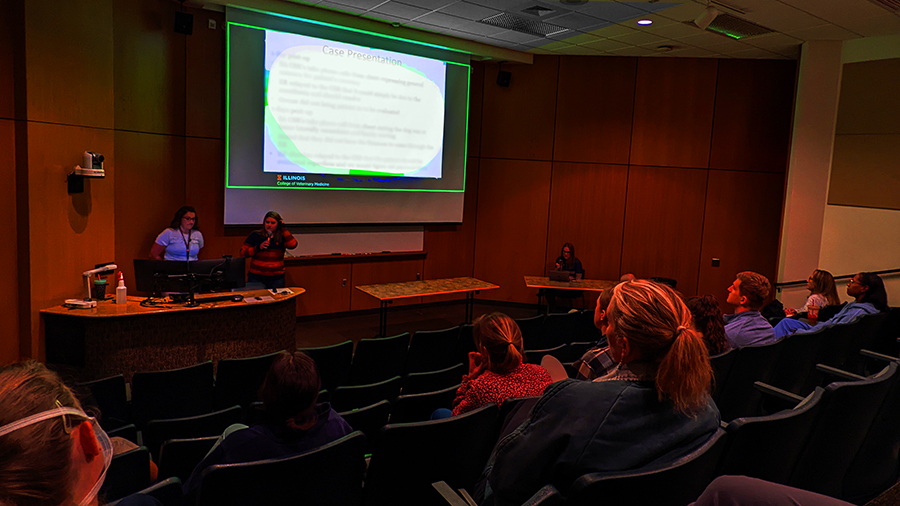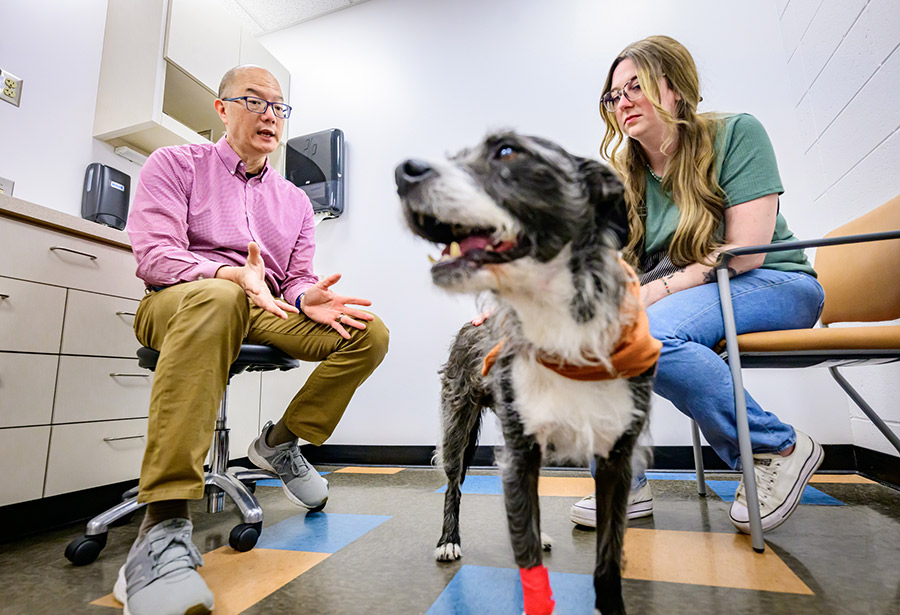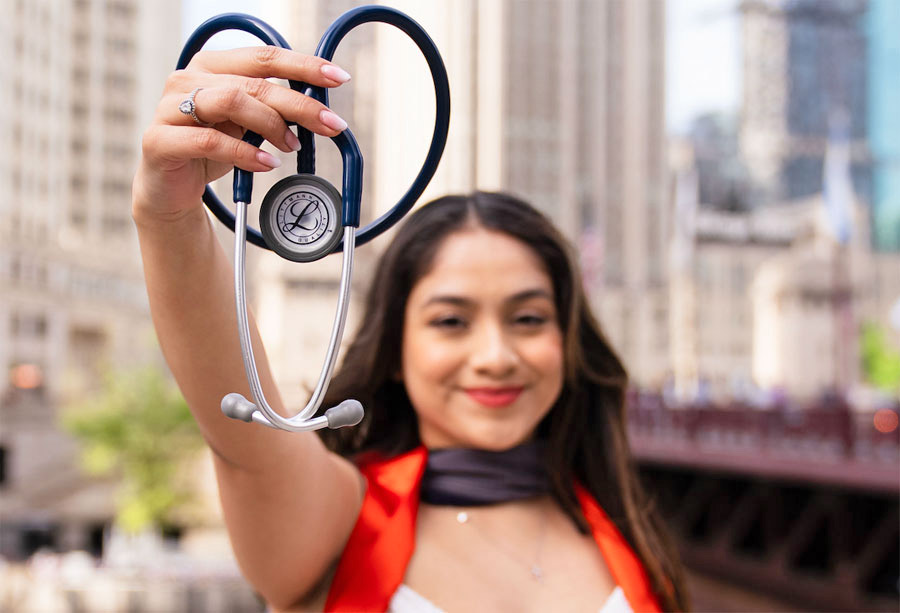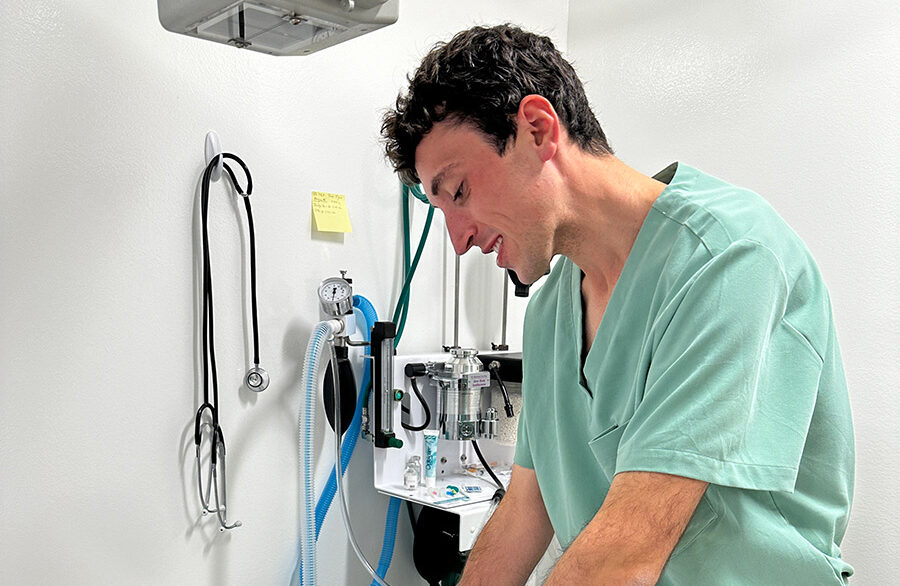Dr. Jennifer Reinhart stood with Dr. Jenica Haraschak and Dr. Allison Bechtel behind the podium in SAC 80. The small lecture hall in the basement of the University of Illinois Veterinary Teaching Hospital was filled with attentive faces. Dr. Reinhart stood in support of Dr. Bechtel, who confidently addressed the crowd.
Although mistakes in medicine are not easy to discuss, Dr. Bechtel spoke to her colleagues about a major medical error in a procedure six months prior. The error affected a cat that was administered a liquid feeding intravenously instead of through the feeding tube. As she looked throughout the auditorium Dr. Reinhart thought of the impact the presentation could have on the institution’s veterinary services. With a deep breath, Dr. Bechtel’s began her presentation, one in a series of Morbidity and Mortality Rounds (M&M Rounds).
Show How We Handle Mistakes
In the 1910s, Dr. Ernest Codman shared “the end result theory,” a concept that challenged medical professionals to evaluate patients after procedures and learn from medical mistakes. Dr. Codman’s theory led to the creation of morbidity and mortality conferences in human medicine. In August 2021, the veterinary hospital adopted this idea to implement “M&M Rounds” to enhance culture and communication throughout their services.
This isn’t about a person, a failure, or a mistake. It is about a problem and a process. So, it is addressing the root, not the surface.
– Dr. Julia Whittington
“This program is good for the students to see their superiors say, ‘We, too, make mistakes, and this is how we handle them.’” Dr. Reinhart said. “It shows students that we are fallible and that, when mistakes happen, the important thing is not to place blame but to correct the problem. Then we can figure out how things can be changed to prevent the problem from happening again.”
Dr. Julia Whittington, director of the Veterinary Teaching Hospital, is one of the program’s biggest advocates. She initially got the idea from former department head Dr. Dennis French and integrated pieces of this theory in her teaching. She then approached the hospital’s Quality Improvement Committee with her desire to implement hospital-wide M&M Rounds.
‘Be Brave Yet Safe’
“While I had been doing this process in an informal way for my entire career, I hadn’t looked into the official way to do it,” Dr. Whittington said. “It was important to me that we be brave yet safe. This isn’t about a person, a failure, or a mistake. It is about a problem and a process. So, it is addressing the root, not the surface.”
Dr. Whittington said the M&M Rounds were also an answer to a larger initiative at the hospital to address culture, wellness, self-care, and resiliency. She believes the M&M Rounds have helped address these key points and improve communication across the college’s various services.
Dr. Lauren Forsythe chaired the Quality Improvement Committee and played a key role in organizing the new rounds. As the pharmacy service head and a clinical assistant professor, Dr. Forsythe said she had a unique perspective to contribute.
“One of the most common types of errors is medication errors,” said Dr. Forsythe. “So as the pharmacy service head, I was on the quality improvement committee that addresses errors reported throughout the hospital.”
Dr. Forsythe said when the program began, she reached out, with the help of the Quality Improvement Committee, for faculty to present on specific cases. She said now that the program is running, faculty members submit reports and recommend using their case for the M&M Rounds.
Uniting Hospital Culture, Promoting Student Growth
“By bringing together all the different services, we bring together the different perspectives and the different mindsets,” Dr. Forsythe said. “This also really beneficial in an academic setting. It allows students to see how things are handled, how you address errors and how you communicate in a professional manner. It really shows a commitment to quality as well.”
The M&M Rounds were paused during spring for house officer presentations and began again on October 7.
Dr. Whittington is excited to see the impact this program is having on the culture of the hospital and on the growth of the students as clinicians.
“I remember being a student and hearing the adults in the room discussing cases and feeling very peripheral to that discussion. I didn’t feel as though I had the knowledge to contribute,” Dr. Whittington said. “But as I listen to the questions the students pose and the experiences that the students already have, it is evident they bring so much to the conversation.
“That’s pretty amazing. Because these are our students, but they are also our colleagues and our future.”
By Haley Bicklelhaupt




